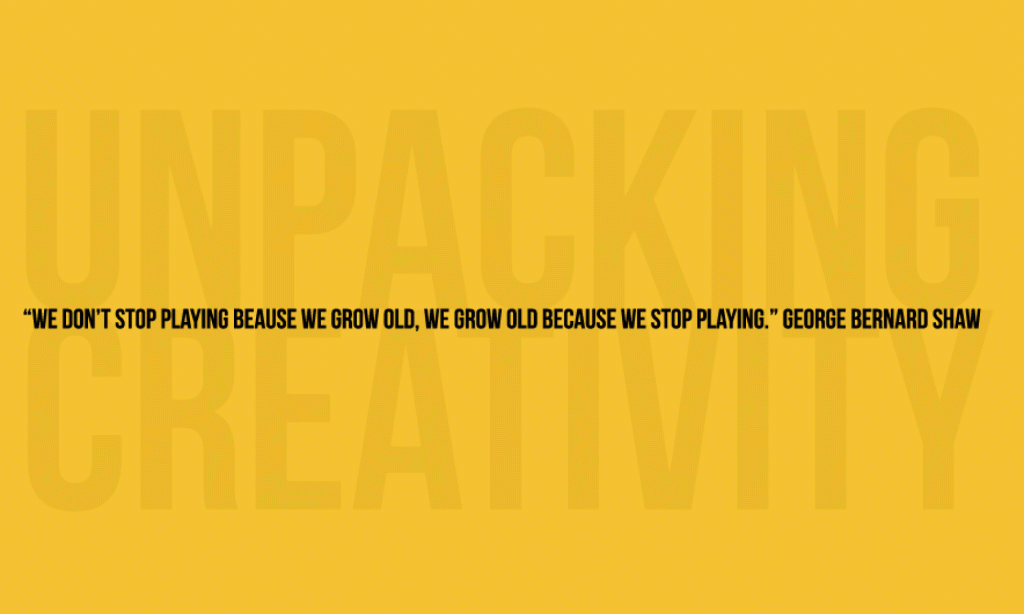Research Methodology
Mixed research methodology based on grounded theory.
- Action research
- Qualitative
- Questionnaires
- Interviews
- Interventions
- longitudinal research that involved several contacts with stakeholders over a period of two months.
21 creative challenges, 5 minute a day. 140 participants. Of the 140 I am familiar with 63 of them, the rest were strangers that had received the link through a friend or social media. These are some of the responses from the polls and surveys. If you would like to know more about the challenge, what exercises I used, responses people sent me per exercise, please go to this link.
Objective: Awareness, trust, habit, reflection.
Activity: Creative activities sent via private chat. 5 minutes a day for 21 days.
Audience: 15-60 year olds volunteers. (defined as “non-creative’). 148 signed up initially. Backgrounds ranged from: Spain, Venezuela, Colombia, Argentina, UK, USA, Vietnam, Puerto Rico, Belarus and Thailand.
Measurement: Poll: Day 7, Survey: Day 15, Poll and Survey: Day 21. Individual conversations with participants and emails DM.
- POLL – DAY 7 of 21. 33 responded.
Done within the Chat on day 7 of the challenge. 33 people responded. I asked what activity have you done? By asking this I would know how many people were engaged more or less and which games were more liked. This helped me determine what games to follow up with, I also wanted some insight on day of the week, does the day of the week influence wether you did it or not. I lost 6 people this week that left the chat.

Challenge: I realised that I had no idea how many people participated. 140 people were in the chat, but the poll only represents people who answer the poll. I talked to friends that were in the chat the did not answer the poll and they answered – I am doing it, just did not have time to answer the poll.
2. SURVEY – DAY 15 of 21. 14 responded.
I used Survey Monkey to see if I could get more interesting information in a survey vs a simple poll in the chat. In this survey I asked things like:
Do the activities stress you?
Are you noticing things more?
Do you feel happier after doing the activity?
Is the activity Fun for you?
Would you be interested in knowing what part of the brain these activities are for?
Do you feel your attitude has work has changed?

Challenges: Only 14 people answered. I used Survey Monkey because a participant had told me she would not answer the polls because they were not private. People preferred convenience over privacy. The fact that it was not in the chat was an inconvenience. I still was not aware how many people were actually doing the challenge, and I lost two participants that left the group. I did get comments- 10 people sent me comments- and this was very valuable. I lost 2 people this week, one (a graphic designer) said she was frustrated because she felt that maybe she was not creative. (FYI- she has her own DIY youtube channel with artistic activities. ) I started sending explanations as to what type of thinking you were using in each activity.
Some Comments:

3. POLL- DAY 21 of 21. 31 responses.
I decided to go try both venues this time, so I started with a poll and offered a survey for those who had more time available. I received 30 responses from the poll. I asked:
Do you feel you notice things more?
Was the challenge too long for you?
Has your perception of creativity changed?
Do you feel more creative?


4. Survey Day 21 of 21. 18 Responses.
I decided to make this survey more in depth, with more open ended questions. Also I was seeing from the emails that creativity meant different things to different people, so I wanted to know what creativity meant for them. What messages they were getting at home or at work regarding wether they were creative or not. What fears did they have?




Has your perception of Creativity changed?

What does creativity mean to you?
– It means facing situations, events and people with openness of mind and being able to propose a variety of ways, ideas, solutions, and possibilities upon these encounters.
– Creativity to me is expanding and creating ideas, breaking out of a prescribed set of limitations or boundaries that are the norm to create something new.
– to think out of the box, to find new o different resolutions to a know answer, thing.
– Inventiveness, inspiration, giving life some “color”.
– Happiness, life style, optimism , solution
– Ideas and storytelling
Comments from end of survey

Challenges: I was surprised that 31 people responded. I expected more. I still did not know how many people were doing the challenge. I was surprised 20 people responded they did not feel it was too long. I felt it was too long. At the beginning of the challenge I was doing all the activities with the group and I had gotten tired of doing them, I was only doing them when a friend or a family member did it with me, so I discovered that the challenge was too long for me, but apparently not for all.
Things I would do differently when I repeat a challenge:
- Targeted groups- try to find a commonality in the group so they can collaborate and communicate with each other. Have empathy with each other. I.E. Same nationality, creatives vs nos creatives, all artists, all writers, anything that brings them together in some way, even when they don’t know each other. etc.
- Smaller group. Try a group of 12 people that can share and communicate within the group.
- Open Chat. The chat would be open for comments.
- Daily Reflection within the chat. How did it make you feel? challenges, joys of activity?
